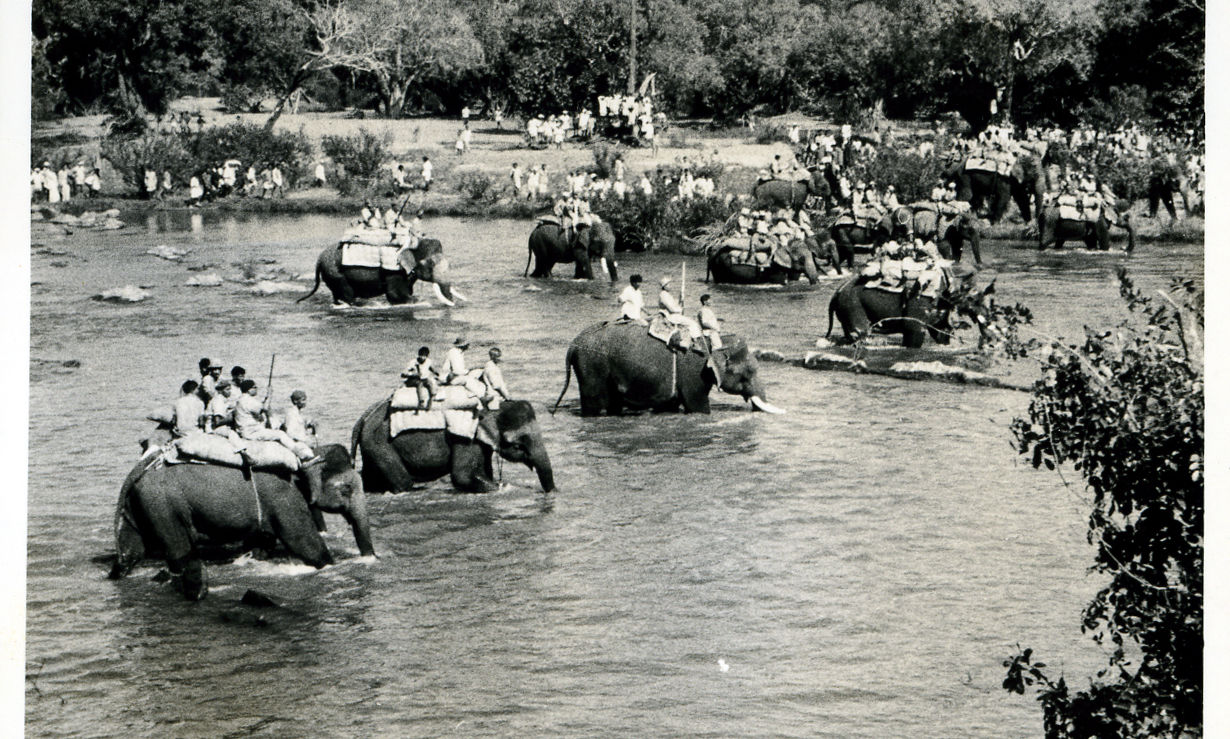The Mysore Khedda
Published on: 01/03/2019
Published on: 01/03/2019

Photo title: Elephant capture during the British era in India
|Photo Credits: Wikimedia Commons

Photo title: The River Drive of the Kakankote Khedda
|Photo Credits: Mr. Ananda Krishna

Photo title: Man riding an elephant – Pre-historic rock cave painting Bhimbetka
|Photo Credits: Wikimedia Commons

Vikram Nanjappa likes to be described as an interested and well-informed amateur. He draws his inspiration from the band of men called the Orientalists, most of whom were amateurs. By profession, they were soldiers and administrators. However, today, they are remembered as giants of scholarship. Like them, his field of enquiry is ‘Man and Nature : whatever is performed by the one or produced by the other’.
An Aural Journey through Nagarahole: The Sound of Tardiness
An Aural Journey through Nagarahole: The Seen and the Sawing
Touring Kabini with Your Eyes Closed: An Aural Journey through Nagarahole: Alarms True and False
An Aural Journey through Kabini: Pre-Dawn Critters and Jitters
An Aural Journey through Kabini: The Beginnings
Why you should put a backwater boat safari at the forefront of your Kabini visit – 2
Why you should put a backwater boat safari at the forefront of your Kabini visit – 1
From the Kitchens of Evolve Back – Sutta Sigadi Mathu Hannugalu
From the Kitchens of Evolve Back – Masala Raagi Cheela
From the Kitchens of Evolve Back – Tandoori Zaffrani Paneer & Tandoori Phool
From the Kitchens of Evolve Back – Tumbida Ginnu
From the Kitchens of Evolve Back – Raagi Mudde Bassaru
From the Kitchens of Evolve Back – Hurida Meke Mamsa
From the Kitchens of Evolve Back – Masala Hoo Kosu
From the Kitchens of Evolve Back – Kuruba Adina Saru
From the Kitchens of Evolve Back – Sutta Naati Koli
From the Kitchens of Evolve Back – Savatekayi Suttadu
From the Kitchens of Evolve Back – Kendadali urida sigadi mathu meenu
From the Kitchens of Evolve Back – Bidirinalli Beyisida Koli
From the Kitchens of Evolve Back – Hurida Koli
First glimpse of god – the Black Panther of Kabini